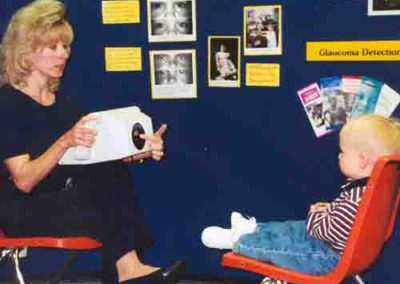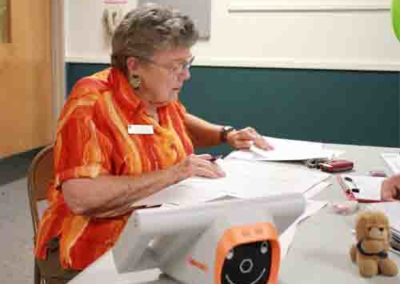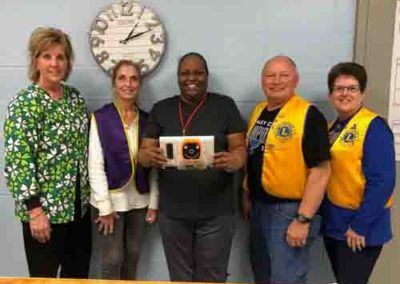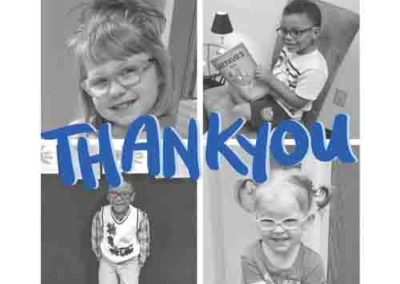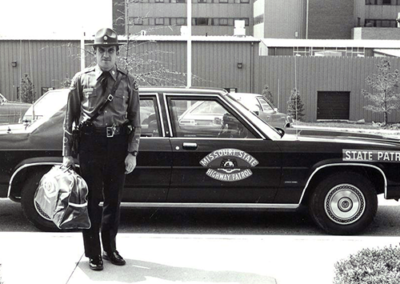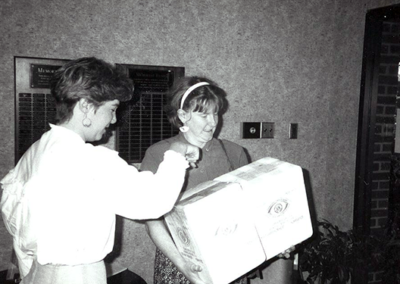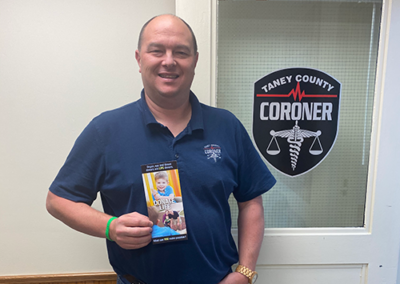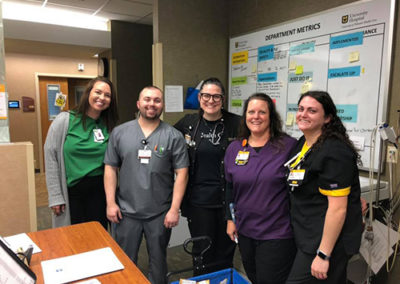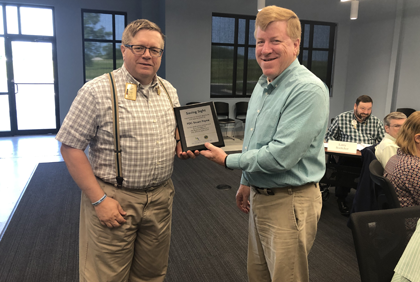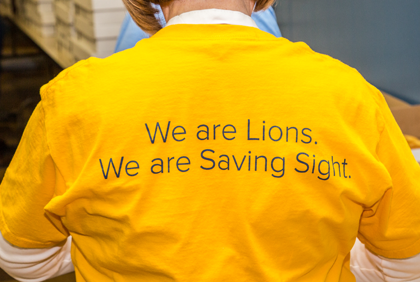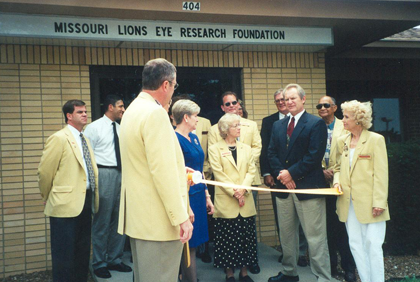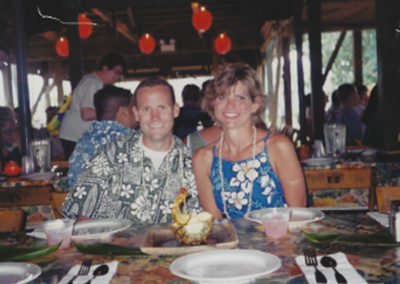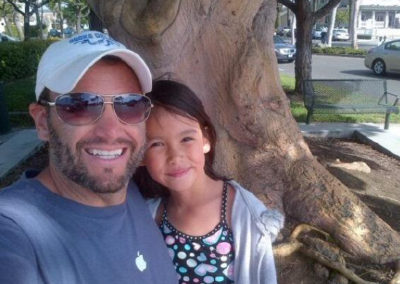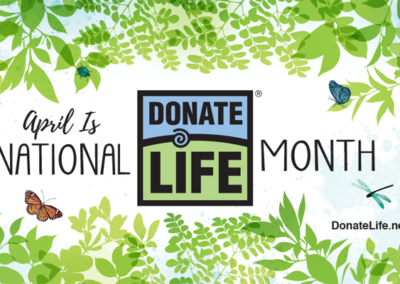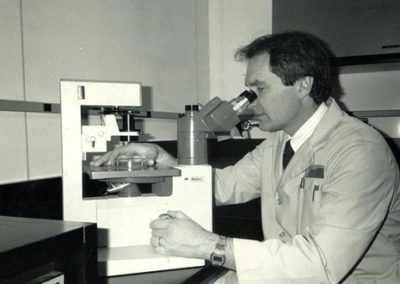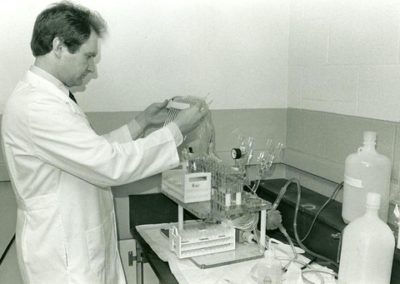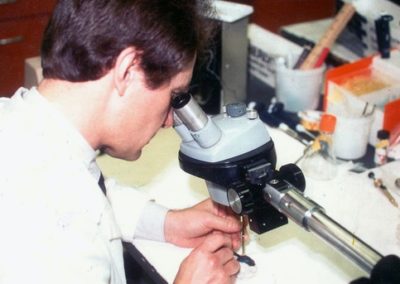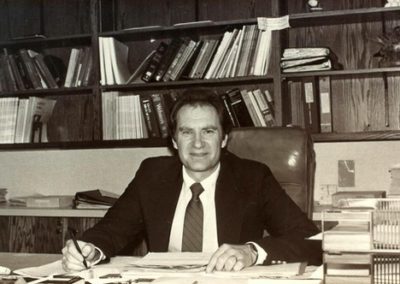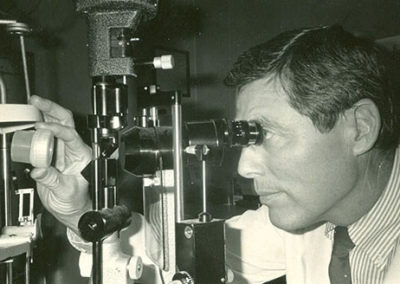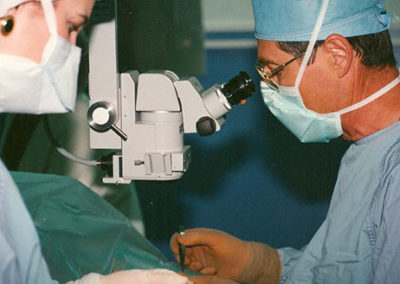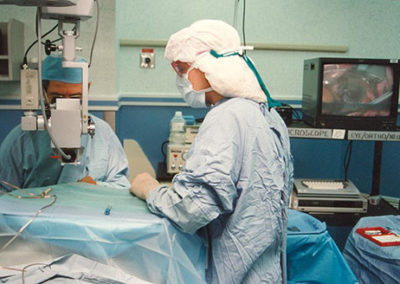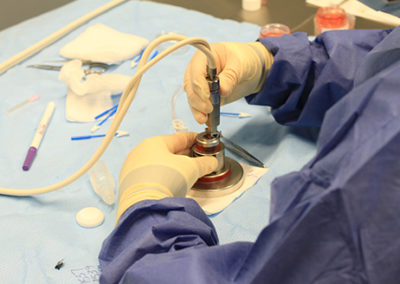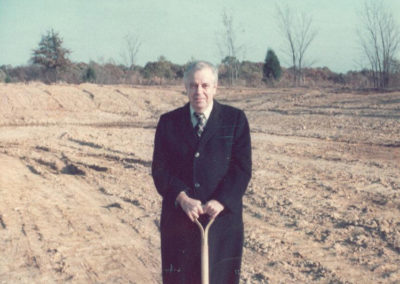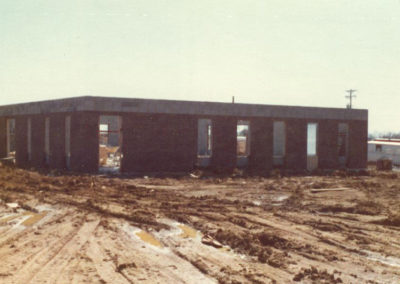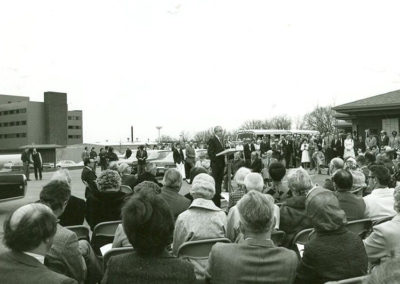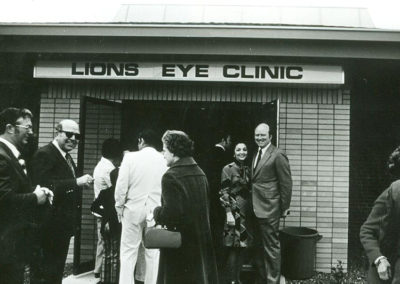KidSight Vision Screening Program
Throughout our 60 year history, Saving Sight has been involved in many sight-saving programs. As Saving Sight continued to grow through the years, the St. Louis Children’s Hospital and St. Louis-area Lions piloted an amblyopia screening program in 1995 with a handful of volunteers who screened a few hundred children a year. Today, that program is called KidSight. As KidSight continued to grow, it was granted its own 501(c)3 nonprofit status on August 26, 2016. KidSight’s program has grown to screen the vision of more than 67,000 kids throughout Missouri each year with the help of trained staff and volunteers operating in 5 offices across the state. Since 1995, KidSight has screened the vision of more than 500,000 children.
“In my four years with KidSight, the thing that I hear from so many parents is ‘I had no idea my child had a vision problem’. Every time I hear it I am reminded how important our work is – so many of the young people we serve wouldn’t get the vision care they need without the prompt from KidSight. I think about how those kids will be better able to learn and develop to their full potential,” said Katherine Patterson-Paronto, Executive Director of KidSight.
Join Saving Sight in supporting our partner nonprofit this month to help them provide back-to-school screenings! All children deserve to have healthy vision to see and learn. You can learn more about KidSight and support their mission at kid-sight.org/.
Eye Donation Takes a Community of Partnerships
Since Saving Sight’s creation in 1960, it has relied on a network of community partnerships to ensure that the gift of sight can become a reality to restore sight to others. From our work together with donor hospitals who make referral calls into Saving Sight on potential eye donor cases, to the Medical Examiners, Coroners and Funeral Homes out in the field who work with us to support donor families in honoring their loved one’s choice to give sight. The act of facilitating eye donation for transplantation is one that takes a dedicated network of impassioned individuals. We thank you for your partnership and dedication over the past 60 years and we look forward to fostering our relationship for years to come.
Leadership Through the Years
The Missouri Lions have given their volunteer, financial, and board support to our programs since 1960. Because of their support, Saving Sight is able to change more lives by saving sight each and every day. The Saving Sight Board of Directors is comprised of several key Lion members. Their leadership and expertise has helped the eye bank grow and evolve throughout the last 60 years and continues to move us forward into the future.
Read why Pat Martchink, Board President, and Larry Boettcher, Board Vice-President, find serving on Saving Sight’s Board to be impactful.
Why is it impactful for you to serve on the Saving Sight Board? I have worked professionally in nonprofits for more than 35 years and I believe it is a noble cause. My father was blind for a part of his life so I understand the importance of Saving Sight’s mission. I believe in the idea of “service” and being a part of Saving Sight helps me to fulfill that idea.
Tell us about your experience as a Saving Sight board member. I can honestly say that I enjoy serving on this board. This isn’t a mundane meeting that you just dread going to, because what we do does make a difference and has a profound impact on our communities. Not only for our employees, but for all of those patients that have restored eye sight or relief from their dry eye. I believe in what we do so much I personally support the organization through monthly giving.
Eye Banking Now & Then
As technology has changed over the years, so has the eye tissue recovery process. In its early days, Saving Sight recovered only a few corneas in a year. However, today, Saving Sight recovers approximately 9 donor corneas each day for sight restoring surgeries. While our impact in the community has grown, we’ve also challenged ourselves to provide the best experience for donor families and organizational partners, as well as the best outcomes for transplant patients.
Over the years, Saving Sight has made many improvements to its recovery process to reduce the time taken to preserve of the gift of donation and offer tissue to surgeons for transplant. As a result, much of the eye banks’ work that had once been completed by one or two positions, is now spread over a group of specialized departments. This level of specialization and expertise allows us to ensure quality, consistency, and scale our efforts to help the most people possible through our mission.
Cheryl Shares Her Brother’s Legacy as a Donor
Listen to Cheryl Share Her Brother's Legacy as a Donor
April is National Donate Life Month, a time to raise awareness about the importance of organ, eye and tissue donation and to honor and celebrate those who have saved lives through the gift of donation. To celebrate Donate Life Month, Cheryl talked with Saving Sight to share her more than 20 year connection to organ donation as a kidney transplant recipient and to share her brother’s legacy first as a living kidney donor and later as an eye donor.
“I’m such an advocate for organ donation. Scot had donated to me and then my friend ended up being a sister-like match for me, which it just seems like such a miracle that she was such a good match for me. Since my transplant, another friend of mine was an altruistic donor to a man that she did not know. And then she inspired another person to be an altruistic donor. Organ donation just really is so soul-stirring. Of course, being a kidney recipient myself I do encourage others to consider donation. There’s nothing greater than knowing one being is willing to lessen the burden of another through organ donation. When I hear organ donation stories, I know there is such good in the world. It gives our family great pride and comfort to know that our tragedy of losing Scot lessens the pain of another’s suffering. It just seems like it’s the ultimate act of humanity,” says Cheryl.
A Former Executive Director’s Retrospective
For 35 years, Dr. Ron Walkenbach served as Executive Director at Saving Sight. During his tenure in eye banking, Walkenbach saw many changes in eye, organ and tissue donation, including the public’s perspective on donation.
“The biggest change I saw by far was the attitude of the public on eye donation,” said Walkenbach, reflecting upon his career. “By the time I left in 2014, most people thought it [eye donation] was a humanitarian thing to do.”
During his time at Saving Sight, Walkenbach led the organization in its participation in the Eye Bank Association of America’s cornea collaborative. Through this project, Saving Sight helped to identify best practices in providing more tissues for transplant. Additionally, Walkenbach led Saving Sight’s support of the creation of first-person authorization registries in Missouri, Kansas and Illinois.
Advancing Technology in Corneal Transplantation
While the first corneal transplant was performed in 1905 by Dr. Eduard Zirm in the Czech Republic, it wasn’t until the mid-twentieth century that our modern system of eye banking developed in the U.S. Since then, there have been many advances in the field of corneal transplantation. A surgical procedure that required a hospital stay decades ago is now an outpatient procedure, requiring fewer stitches and boasting a quicker recovery time.
Throughout its 60-year history, Saving Sight has worked to meet the changing needs of the ophthalmologists, and their patients as transplant surgery techniques have advanced. Today, Saving Sight prepares donor tissue for a variety of partial-thickness lamellar transplants, meeting the needs of both physicians and our community. Listen to one of Saving Sight’s Medical Directors, Dr. Gregg Berdy, give some historical context to eye banking from a transplant surgeon’s perspective.
A Mission Begins in Mid-Missouri
For six decades, Saving Sight has been a mainstay in the Columbia, Mo., community. At the same time, we’ve grown to serve many families and recipients throughout our region, nationally and internationally. This winter, we were proud to work with local Missouri Journalism School student, Maddy Montoya, to document the stories of two mid-Missouri individuals whose lives have been touched by Saving Sight’s mission.
For more about our history, check out our About Us page.



